|
 |
|
The Royal Orphanage
On 23rd July, 1900 the Duke and Duchess
of York came to Wolverhampton to open the new wing of the
infirmary and to distribute prizes. On arrival they were
conducted to the Central Hall where they were greeted by the
Chairman Mr. William Lees and his wife, members of the
Board, the Ladies' Committee and members of staff.
Afterwards they opened the new wing of the infirmary and
were entertained at a luncheon in the orphanage grounds.
They then crossed over Penn Road to a
large marquee that had been erected on the field opposite,
which had been acquired by the orphanage four months
previously. They were welcomed by roughly 3,250 members and
friends of the charity, of which the Duke and Duchess became
Vice Patrons.
After much correspondence with the
Duke's Private Secretary, Chairman William Lees obtained
approval to use the prefix "Royal" in recognition of 50
years work. During the Duke's speech he announced that in
future the institution will be known as the Royal Orphanage
of Wolverhampton.
When the Duke and Duchess departed, the
guests were given tea.
|
|

The Senior School. From 'A History
of the Royal Wolverhampton School'. |
| During the late 19th century the number of children
in residence had slowly been increasing. In 1906 the
Board of Education indicated that the boys' classrooms,
dormitories and dining hall were all overcrowded. The
Board of Governors decided that the problem had to be
urgently rectified. They decided to add an additional
wing to the building that would contain classrooms and
dormitories, and to enlarge the boys' dining hall. They
also decided to add a hot water system. Around £2,700
was raised to fund the alterations. On 13th February,
1907, William Lees resigned as Chairman. He was
succeeded by E. J. Chambers. In 1908 the Board of
Governors decided that no children would be admitted,
unless they could read and write. Also in 1908 the boys'
toilets and the girls' schoolroom were improved, and a
new girls' dining hall and dormitory were added in 1909.
In August 1910, E. J. Chambers resigned and was replaced
by Sam Wells Page. |
|
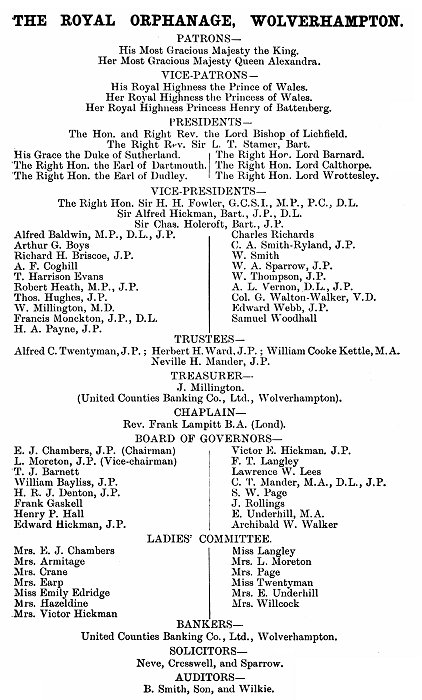
From the 1908 Wolverhampton Red
Book. |
|
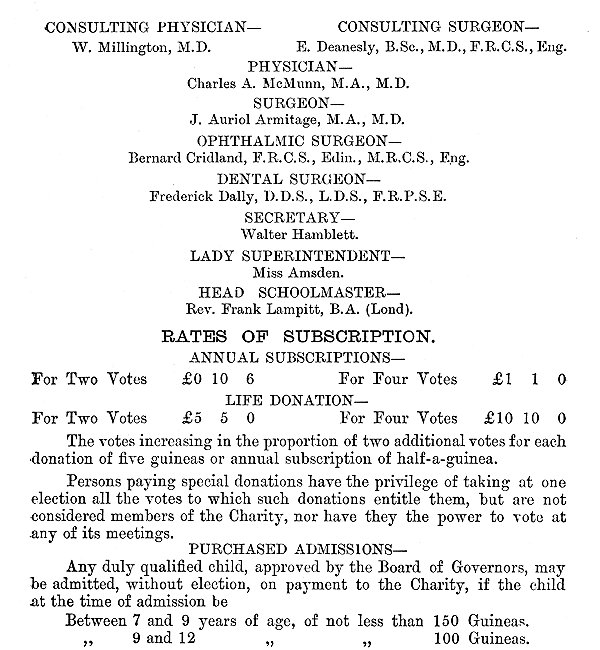
From the 1908 Wolverhampton Red
Book. |
|
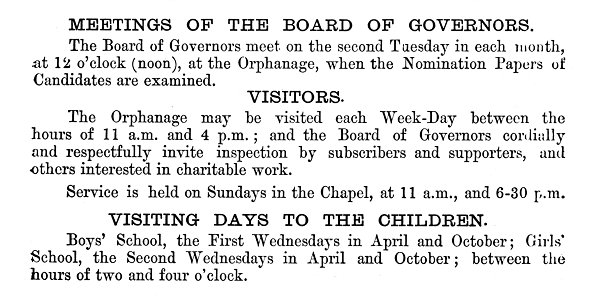
From the 1908 Wolverhampton Red
Book. |
|
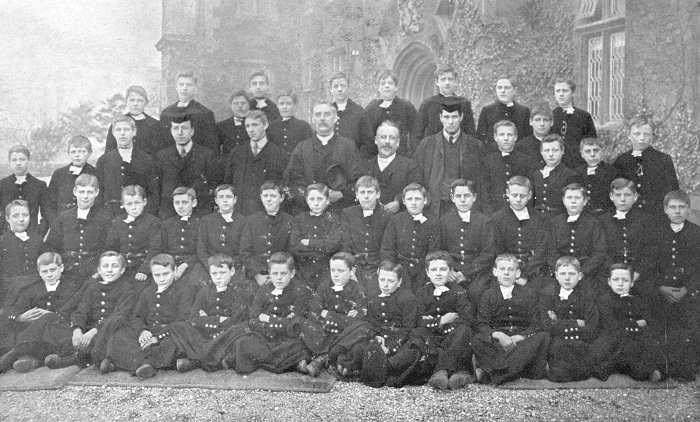
A group of senior boys. From the
1908 Wolverhampton Red Book. |
|
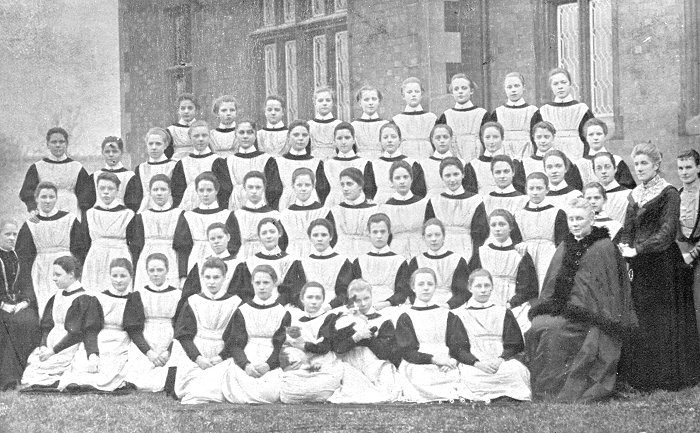
A group of senior girls. From the
1908 Wolverhampton Red Book. |
| The orphanage was 60 years old in 1910. To
commemorate the occasion new extensions were planned,
which included a classroom, a reading room, a physics and
chemistry laboratory and a large dormitory for the boys,
and two new wings for the girls' school containing a
classroom, a reading room and dormitories. The buildings
were designed by F. T. Beck and built by Henry Willcock
& Company. The opening ceremony took place on 7th
July, 1911 with full Masonic honours. The Earl of
Dartmouth, Principal Grand Master of Staffordshire and
Senior President of the orphanage, along with 500
freemasons took part in a ceremony which included a
presentation of prizes by the Countess of Dartmouth. In
a speech the Earl announced that the new boys' wing
would be called the King Edward VII Wing and the girls'
wings would be the Queen Alexandra Wings.
In 1911 another 70 children were admitted to bring
the total to 330. By 1914 there were 350 children. At
the outbreak of war in 1914, some members of staff
decided to join the armed forces. Initially 6 assistant
masters joined-up, to be followed by another 20 as the
war progressed. Because of the difficulties caused by
the staff shortages, the Headmaster the Rev. Frank
Lampitt decided to train some of the school leavers as
assistant masters providing they agreed to remain in
that role for 4 or 5 years. Staff shortages were a
problem for some time because they were on a lower
salaries than teachers at other educational
establishments and there was no pension scheme. |
|
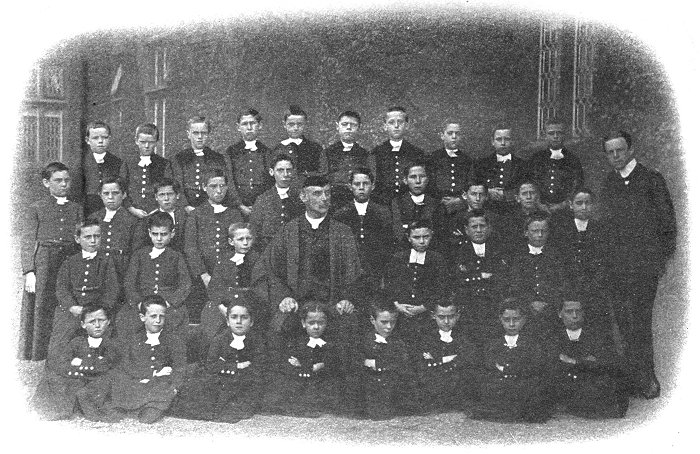
A group of junior boys. From the
1913 Wolverhampton Red Book. |
|
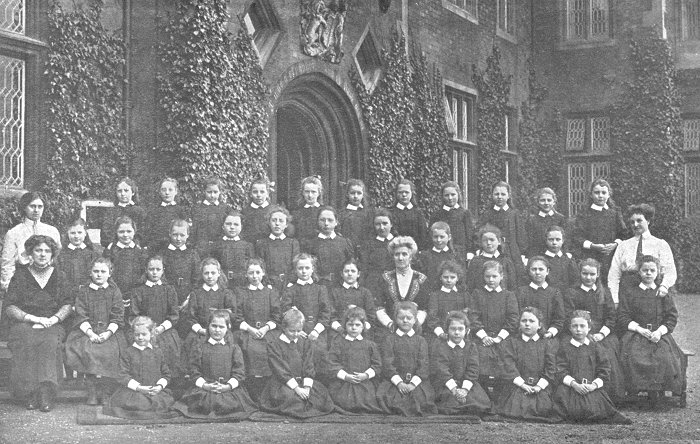
A group of junior girls. From the
1915 Wolverhampton Red Book. |
| In January 1921 the Rev. W. Louis Allen was appointed as
the new headmaster after the death of the Rev. Frank Lampitt,
and in June of that year a formal application was made to he
Board of Education for the establishment to be recognised as
a Secondary School. On 27th July, senior members of staff
attended a meeting at the Board of Education, and in October
the school was inspected. The Board's inspectors announced
that the boys' school was almost good enough for
recognition, but the girls' school was a long way off. It
was thought that the girls should spend less time on domestic
training, such as learning to sew and working in the laundry, and more
time should be spent on academic subjects. Suggested
improvements for the boys' school included the appointment
of better qualified teaching staff, the adoption of the
Burnham Scale, and the extension of the leaving age to 16.
The Board accepted the inspectors' findings, and on 22nd
February, 1922 the boys' school became an officially
recognised Secondary School. The school was inspected again
in March 1924. The inspectors' findings were as follows:
| The leaving age has been raised and
there is a good entry for the First
School Examination. In December, I923,
eight boys entered for the Cambridge
School Certificate and all of them
passed, three of them with Honours; and
the same three gained exemption from the
London Matriculation. There are now
several boys doing work of a
post-matriculation standard, two of them
working for Open Scholarships. The
staffing on the boys' side may be
considered satisfactory; four Masters
all with Honours degrees have been
appointed since the Full Inspection. |
|
The report on the girls' school was not so complimentary,
which resulted in extensive improvements including more
classrooms, better swimming facilities, bedrooms for the
assistant mistresses and domestic staff, and improvements to
the heating system and the electric lighting. Two acres of
land were acquired for use as a girls' recreation ground
which was opened by the Countess of Lichfield on 21st July,
1927.
After a successful inspection in 1927, an application for
recognition of the girls' school was made to the Board of
Education, and on 1st August, 1927 the girls' school was
officially recognised as a Secondary School.
|
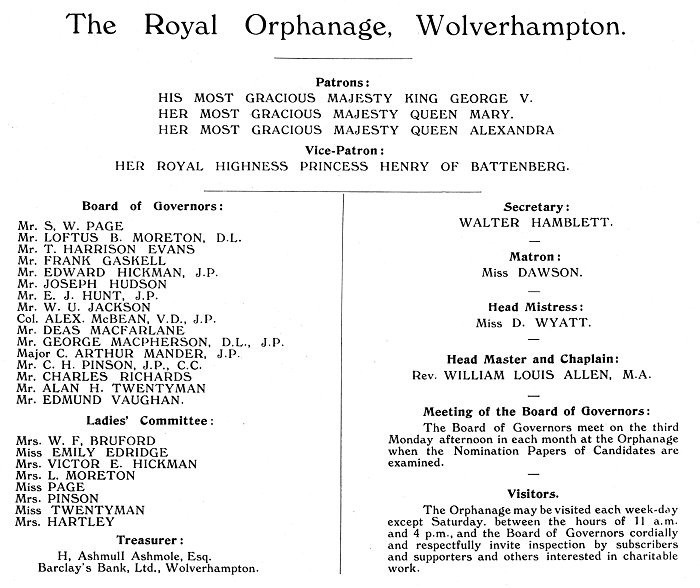
From the Royal Orphanage
Souvenir Book for 1924. |
In 1928 a new wing was added to the girls' school to
provide extra dormitories and two common rooms. It was
opened by the Earl of Dartmouth on 26th July, 1929. By March
1931 there were 224 boys and 112 girls in the school. In June
1930 the Graiseley Old Hall estate owned by Mr. George Green
was on the market. It was purchased by the orphanage in
order to increase the size of the playing fields on the
opposite side of Penn Road. |
|
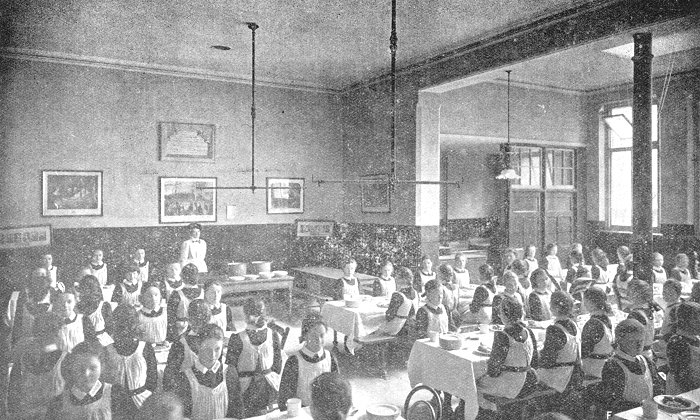
The girls' dining hall. From the
1924 Royal Orphanage Souvenir Year Book. |
 |
|
 |
Return to the
previous page |
|
Proceed to the
Junior School |
|
|